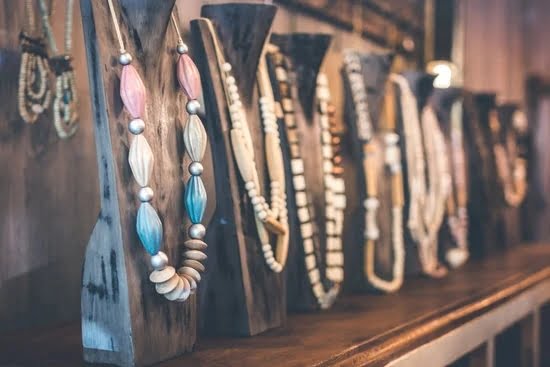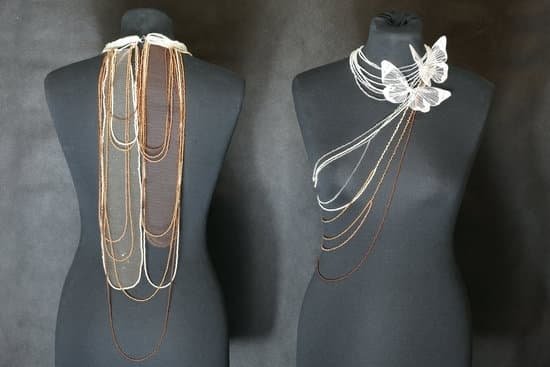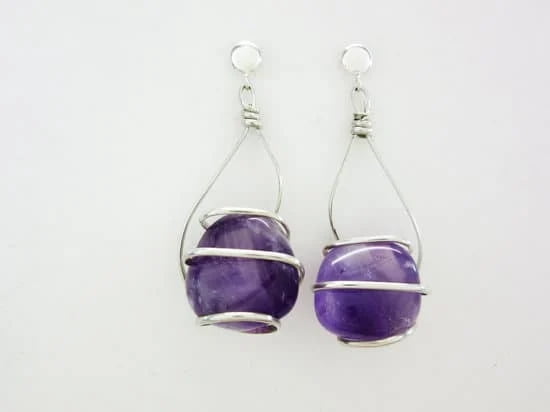Introduction Introduction to Jewelry Polishing Cloths
Jewelry polishing cloths are a common tool for cleaning and polishing jewelry. They are the most effective way to clean any kind of jewelry item from fine pieces to costume jewelry. Polishing cloths not only help remove dirt, oils and sweat that can accumulate on jewelry but they also impart a shine and luster to metal surfaces. When maintained and cared for properly, these cloths can provide a lifetime of service.
Cleaning your Jewelry Polishing Cloth
The first step in cleaning your polishing cloth is to make sure it is free from any dust or dirt particles that may have accumulated on its surface. The best way to go about this is by vacuuming or brushing the garment away with a soft-bristled brush, followed by rinsing with warm water. After washing, let it dry completely before storing it away in an airtight container or Ziploc bag until ready for use again. Furthermore, you should also clean the inside of your jewelry storage case where the polishing cloth is kept as well in order to ensure that debris does not become gathered the next time you polish your jewelry items.
Maintaining Your Jewelry Polishing Cloth
You will want to keep your polishing cloth in great condition so that it can effectively clean and polish your jewelry items. To do this, you will want to make sure that you regularly replace them every few months since they can accumulate dirt over time which could end up scratching the surface of your precious metals instead of polishing them effectively when rubbed against them. Furthermore, you will want to pay attention when using strong chemicals such as ammonia while cleaning since they can interfere with the fabric’s capabilities and thus should be avoided entirely when possible. Additionally, if heavier cleaning is needed than just wiping down a piece of jewelry with a polishing cloth then use either an old toothbrush soaked in detergent or mild soap instead in order to achieve better results quickly whilst avoiding harm coming done upon the fabric itself! Finally, always keep different kinds of fabrics for different types of materials as certain kinds may be more suited for softer stones such as pearls or opals than others made out of synthetic fibers which are typically used for metals like gold and silver specifically!
What is a Jewelry Polishing Cloth?
A Jewelry Polishing Cloth is a special type of cloth that is designed to gently clean and shine jewelry. It is made with a specialized fabric that is soft, yet strong enough to remove dirt and oils without scratching or dulling metal or gemstones. The cloth can be used on silver, gold, platinum, copper, brass, diamonds and other precious stones without any risk of damage. For best results, use dry or slightly dampened with water. It can also be used on watches and other jewelry pieces made out of leather or other materials.
When it comes to cleaning your polishing cloth, there are several ways you can do this depending on the type of fabric your cloth is made out of. For cotton cloths, you can machine wash them with cold water and detergent and then air-dry them afterwards. If your polishing cloth has Goldguard protection included (check the manufacturer’s instructions) then you should always hand-wash in warm water instead. After washing the cloth thoroughly with mild soap; rinse it off before putting it in the dryer for a quick drying cycle at medium heat setting. Lastly if you have one made from microfiber material, you should only spot clean instead of machine washing as this will maintain its strength and quality for years to come.
Identifying the Jewelry Polishing Cloth
When cleaning jewelry, it is important to be able to recognize the type of polishing cloth that should be used. Jewelry polishing cloths are typically made of a special type of cotton fabric impregnated with a non-abrasive cleaning compound containing a small amount of microcrystalline wax. The wax helps to protect the surface of the jewelry piece from scratching, discolouring and oxidation damage caused by daily wear and tear. They can also be treated with silicones or other lubricating agents that enhance the luster and shine of the jewelry piece. These cloths come in various colours and prints for easy identification; usually solid black for gold and silver pieces, yellow for brass, bronze and copper items, blue for platinum pieces, pink for titanium items and green for palladium articles.
Advantages of Cleaning Jewelry with a Polishing Cloth
A jewelry polishing cloth is an effective and convenient way to clean and maintain your gems. When used correctly, it can bring back the luster of precious metals and facilitate a more thorough cleaning. It is useful for removing tarnish and improving the shine of diamond jewelry. Additionally, a polishing cloth does not require any water or additional cleaning products that may damage the delicate materials found in many pieces of jewelry. It is also one of the safest methods of deep cleaning jewelry as it will never scratch delicate stones or metals—this makes it an excellent choice for those with intricate and valuable pieces in their collection.
Another advantage to using a polishing cloth to clean jewelry is that it can be used on both gold and silver designs without fear of negative reactions from mixing metals. The soft material helps you avoid scratching your gems during the cleaning process due to its extra soft surface. Moreover, if cared for properly, a polishing cloth can last between six months and a year before needing to be replaced. As such, although there is an initial investment in purchasing a quality polishing cloth, over time it should pay off in saved money, effort, and time when caring for all your favorite gems!
Preparing Your Jewelry for Cleaning with a Polishing Cloth
Before starting the cleaning process, make sure all jewelry pieces have been securely fastened and secured. Remove any stones or gems from their settings and place them into a bowl of warm water with a mild detergent. Allow the pieces to soak for 15-20 minutes. Make sure to use caution when removing items to avoid damaging prongs or clips that hold stones or gems in place.
Once the pieces have soaked, dry them off with a soft cloth and inspect them closely for any dirt or debris. If needed, use a small soft brush to help remove more stubborn dirt and grime buildup. After cleaning the jewelry, it is time to prep it for polishing with the polishing cloth. Place your jewelry item on a clean surface and gently buff away any oxidation with the polishing cloth until you’ve reached your desired shine level. Re-secure any stones or gems using tweezers if needed. When finished, store your jewelry in an airtight container with anti-tarnish strips to preserve its shine and luster.
Possible Tools to Use in Combination with the Jewelry Polishing Cloth
When using a jewelry polishing cloth to clean your jewelry, there are certain things you should keep in mind. First of all, you need the right tools to properly and safely use the cloth. You may want to combine different items together in order to get a better result. Examples of these include: soft bristled toothbrush, cotton pads, soft cloths, plain white toothpaste (non-gel type), or a gentle liquid cleaner specifically designed for use on gems and metals. Additionally, if needed you can also invest in buffing materials and waxes specific for your jewelry’s metal/gemstone combination. When buffing is necessary, always go gentle with repeated light passes rather than rubbing hard into it once. By employing the correct combination of cleaning products and tools, you should be able to avoid causing scratches or other damage as you clean and polish your jewelry with the polishing cloth.
How to Clean Jewelry with a Polishing Cloth
The best way to clean jewelry with a polishing cloth is to first remove any dirt, oil, and debris the jewelry might have collected. Start by gently brushing away any obvious dirt or grime with a soft toothbrush. Then, moisten a corner of the cloth with water and rub the piece of jewelry gently. This should lift away any remaining dirt and make the metal shine. Avoid using soapy water as this can damage delicate gems and stones. Use a separate section of the cloth for each piece of jewelry and refrain from using too much pressure as it can scratch some surfaces. Finally, buff the surface with a clean, dry section of the cloth until your jewelry looks like new!
Rinsing and Drying the Jewelry After Polishing
After polishing your jewelry, it’s important to rinse it off with plenty of cool, clean water and dry it thoroughly. Use a damp cloth to gently pat the jewelry or move pieces out from under running water. Use a soft-bristled brush and lukewarm soapy water to remove any grime, and then rinse the piece again. A few drops of lemon juice can be added to help break down oils and help lift more stubborn dirt deposits. Finally, use a soft cloth (like flannel) to pat it dry. If some hard-to-reach areas are still wet after rinsing, consider using a non-abrasive liquid cleaner designed for use on metals and gemstone jewelry pieces. Do not use abrasive yarns such as steel wool as this can cause scratches or loosening of setting stones.
Different Types of Jewelry Polishing Cloths
Jewelry polishing cloths are a great tool to help maintain the quality and luster of jewelry items. They come in a variety of shapes, sizes, and fabrics, so it is important to know how to clean them properly. The first step is to check the manufacturer’s instructions for any special cleaning recommendations. Generally, however, most types of jewelry polishing cloths can be machine washed (or hand-washed) in cold water with a mild detergent or a specialty cleaner formulated for cleaning cloths. After washing the fabric with either method, rinse thoroughly and let air dry completely before storing. Alternatively, many types of polishing cloths may be cleaned with rubbing alcohol or stuffed into paper lunch bags and baked in an oven at 350°F for 20 minutes. If using this method to clean your cloths, allow them time to cool down before using or storing them. For non-fabric jewelry polishing materials such as impregnated cloths or wipes made from microfiber or leather, it is best not to submerge in water but instead wipe down with a damp towel and hang out to dry before storage.
Cleaning Cloth Care
When caring for your jewelry polishing cloth, it is important to ensure that it is kept as free as possible of dirt and particles. After each use, be sure to rinse the cloth thoroughly in warm water. This will help rid the material of any chemicals or harsh substances that may have been introduced when polishing jewelry. After rinsing, make sure to air dry the cloth on a flat surface away from direct sunlight or heat sources. Once fully dry, store the cloth in an area where it will not collect dust or debris and will remain out of direct sunlight. Taking these measures can help extend the life of your jewelry polishing cloth by keeping it clean and free of contaminants.
Where to Purchase Jewelry Polishing Cloths
Jewelry polishing cloths can be found in many retail stores, such as jewelry stores, department stores, craft stores and online retailers. There are a variety of different types of polishing cloths available; they may be made from cotton, microfiber or treated with special chemical solutions. It is important to know what type of cloth is best for your particular jewelry before purchasing. Additionally, some polishing cloths can also double as a cleaning and protection agent for silverware and other metals. Before using any new cleaning product or process on your jewelry, it’s best to read the instructions first so that you don’t damage or discolor the item.
When it comes to cleaning jewelry polishing cloths, it is important to take into consideration the material from which the cloth is constructed. Cotton cloths are especially sensitive to moisture; if too much water is used when washing them they can stretch out and fray easily. If a cotton polishing cloth becomes excessively wet, it must be allowed to air dry completely before being reused – either hung up with clothespins or gently stretched out in between two pieces of parchment paper and left flat until fully dry. As mentioned above, microfiber polishing cloths are often treated with chemical solutions so these should never come into contact with water – either use a soft brush or compressed air instead if necessary. Finally, caution should always be taken when using any type of cleaning product on delicate materials like pearls as these substances can damage the surface of the jewel itself over time!
Conclusion Tips for Best Results and Care Tips
Following these tips to properly clean and care for your jewelry polishing cloth will help ensure that it lasts. Always read the manufacturer’s instructions before cleaning, and refrain from using harsh chemicals or abrasive materials. Once cleaning is completed, store the cloth in a dry, lint-free environment. Before using the cloth each time, spot check it on a small area of your jewelry as metal plating can be scratched easily. Remember to polish with short strokes rather than a circular motion; this prevents could scratches from appearing on the metal surface. Lastly, always rinse the cloth with warm water after use and keep in mind that polishing regularly can keep your jewelry looking like new for years to come!

Welcome to my jewelry blog! My name is Sarah and I am the owner of this blog.
I love making jewelry and sharing my creations with others.
So whether you’re someone who loves wearing jewelry yourself or simply enjoys learning about it, be sure to check out my blog for insightful posts on everything related to this exciting topic!





